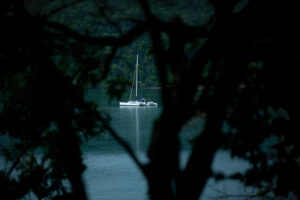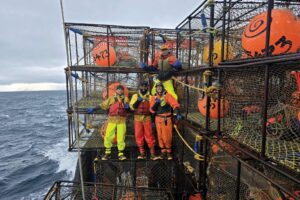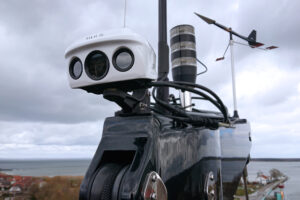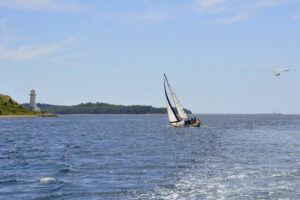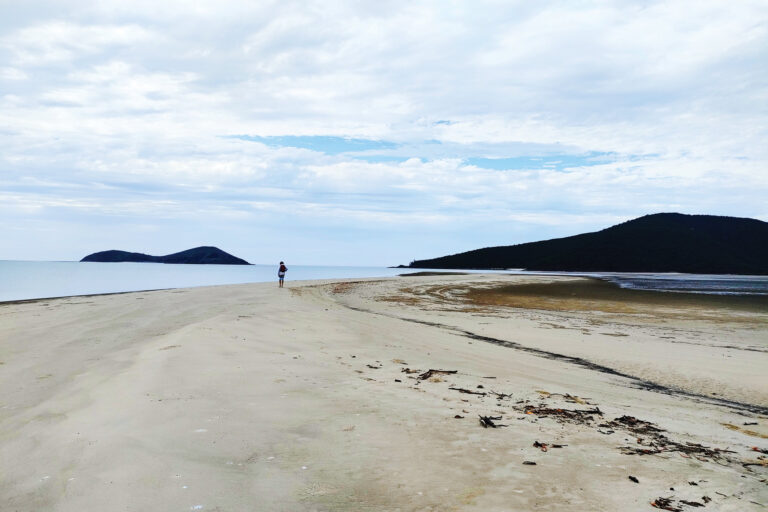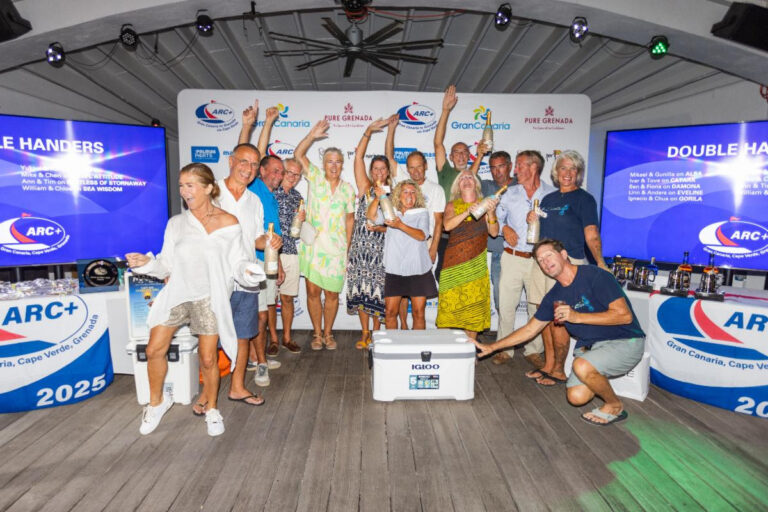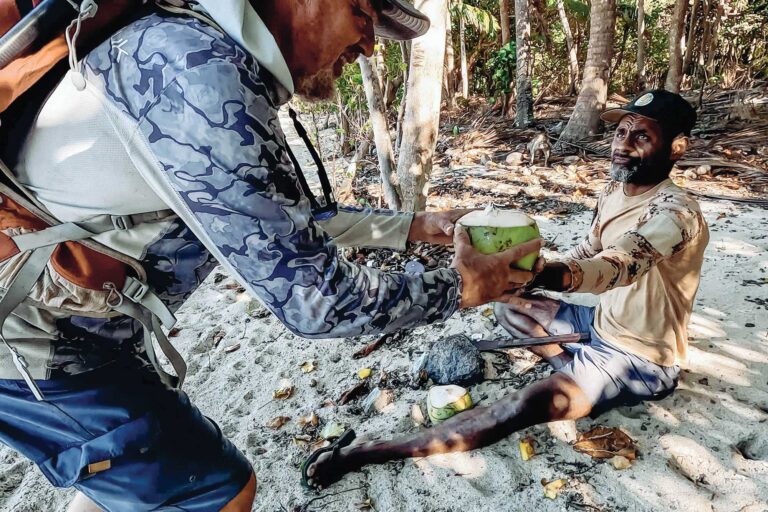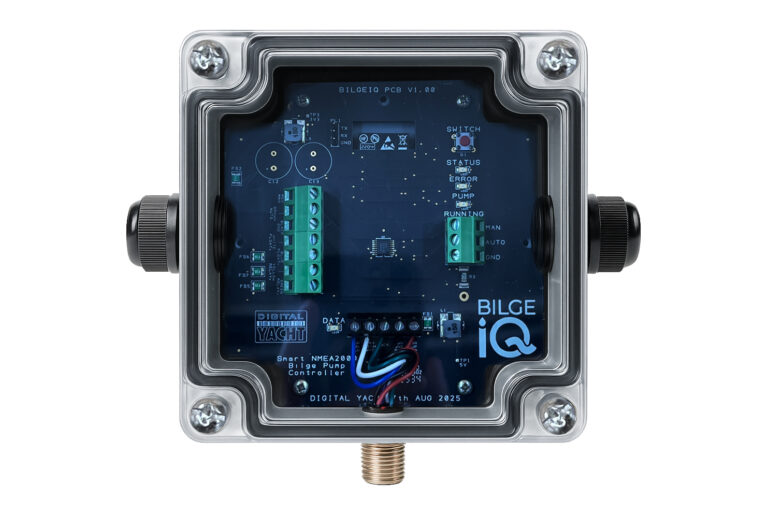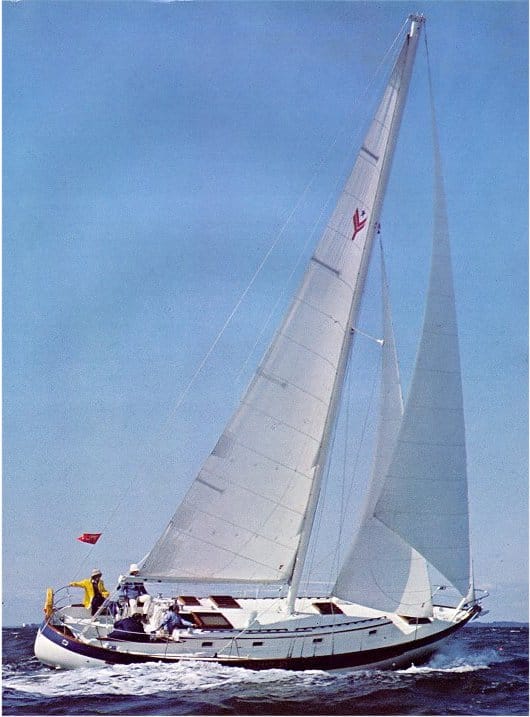
Before the early 1970s, loads of teak, varnish, leaky skylights, long keels, big rudders and enormous undersides with enough wetted surface to require three gallons of antifouling defined the offshore passage-making cruiser. Enter upstarts Nathan Rothman and Bob Perry, and a different concept in offshore boat design began rolling out of the Uniflite factory door in Bellingham, Washington: the Valiant 40 with its trademark canoe stern.
What began as a challenge to design and build a fast, comfortable, safe cruising yacht, a vessel capable of long-distance deepwater voyaging, evolved into one of the most popular yacht designs ever produced. The cut-away forefoot, modified fin keel with external lead, and skeg-hung rudder reduced wetted surface area. Performance was terrific in comparison to more traditional designs, and comfort was not sacrificed.
Between 1975 and 1979, Seattleites Bill and Mary Black on hull number 107 (the seventh boat built), Foreign Affair, became the first sailors to circumnavigate on a Valiant. “Safe” and “comfortable” were words they often used to describe the trip. Two Valiant 40s then entered a difficult singlehanded transAtlantic race. In the 1976 OSTAR, Francis Stokes aboard Mooneshine, hull number 122, became the first American in a monohull to finish. He sailed it very hard, mostly to weather, and didn’t loosen any teeth in the process — despite the contention of contemporary skeptics that you needed a full keel to tame any sailboat upwind in a seaway. He did it again in the same Valiant four years later. His success with the boat encouraged Dan Byrne in hull number 101, the first Valiant produced, to enter the inaugural 1982-83 BOC Challenge singlehanded around-the-world race. Dan and Fantasy completed the difficult 27,000-mile race with its two deep Southern Ocean legs. All of these cruising and racing achievements punctuated the design and building accomplishments of the Rothman-Perry-Uniflite team. That was all I needed to choose a Valiant 40 for my first singlehanded circumnavigation.
Uniflite built 159 Valiant 40s from 1975 to 1984, when Rich Worstell, a Valiant owner and dealer, bought the molds. After producing some 40s in Washington, he eventually moved the operation to Texas. The first “Texas” Valiant 40 was hull number 267. Sometime during the Uniflite operation, between hull numbers 120 and 249, resin mixtures were changed to include a fire-retardant additive. Although conclusive proof was never established, there was a high correlation between the fire-retardant additive and the blisters that later developed on boats between those hull numbers. Blisters developed on most (but not all) of the boats produced between 1976 and 1981. Lots of those “blister” boats are out there with happy owners. Blistered boats represent great dollar value, but may also require costly repairs.
All the 40s have similar sailing characteristics. Early keels are slightly longer than later ones, all the ballast numbers are close to being the same, and Spar-tech in Seattle built most of the rigs. A variety of portlight, hatch, engine, pump and tank manufacturers have been tapped over the years, and many different types of deck gear used, but the interior has remained the same. A functional, comfortable (at sea or dockside) combination of aft “stateroom,” U-shaped galley with terrific storage, traditional main saloon with a bulkhead table or permanent cruising fold-down job, outboard pilot berths, head with separate shower, and V-berth forward make for happy cruising.
Most deck arrangements are the same, although a few early boats had longer booms and end-boom sheeting — a nuisance bordering on dangerous for the unaware helmsperson during a gybe. A mid-boom traveler was introduced with a shorter boom and slightly taller rig, which is much more convenient for many reasons. The cockpit is comfortable and secure.
A Valiant 40 is capable of consistent 165-mile days without a crew willing to expend lots of energy. With conventional windvane, cutter rig, good sails and a bit of attention to trim, a consistent and comfortable 6.5 to 7.5 knots is the norm on a breezy passage. There is just enough bow flare to keep the deck reasonably dry, and loads of forward buoyancy to keep the bow from pearling. In over 30,000 miles of singlehanded sailing I never needed to worry about the integrity of my 40; it handled an amazing and sometimes overwhelming variety of conditions. Rumbling along on a deep reach with a big following sea is something to experience from the Valiant’s safe cockpit.
Best bargain: Look for a fire-retardant, potentially blistered Uniflite 40 built between 1976 and early 1981. Prices should range from $90,000 to $130,000. Hull numbers 250 to 266 were non-fire-retardant resin boats and prices will range from $110,000 to $150,000, again depending on condition and equipment. Texas-built Valiant 40s (numbers 267 to 300) range from $160,000 to $280,000.
Valiant 40 Specifications:
- LOA: 39’11” (12.16 m.)
- LWL: 34’0″ (10.36 m.)
- Beam: 12’4″ (3.76 m.)
- Draft 6’0″ (1.83 m.)
- Ballast: 7,700 lbs. (3,493 kgs.)
- Disp: 22,500 lbs. (10,206 kgs.)
- Sail area: (100%) 772 sq.ft. (71.7 sq.m.)
- Mast above water: 55’0″ (16.8 m.)
- Ballast/Disp: .34
- Disp/Length: 255
- SA/Disp: 15.5
- Fuel: 95 gal. (avg.) (360 ltr.)
- Water: 120 gal. (avg.) (454 ltr.)
- Holding: 15 gal. (57 ltr.)
- Auxiliary: 40-hp (various diesels)
- Cabin headroom: 6’0″+ (1.8+ m.)
- Designer: Bob Perry

